
Imdad K Mahammed
As an experienced Site Reliability Engineering Lead, I am on a mission to revolutionize the way digital transformation organizations approach DevOps and Site reliability Engineering. With a passion for driving innovation and delivering results, I specialize in implementing DevOps practices that enable teams to work more efficiently and effectively. My expertise includes designing and implementing cloud-based solutions on AWS, automating infrastructure and processes, and building CICD pipelines using tools like Jenkins and GITOPS. I am also skilled in scripting using languages like Python and Shell and have a deep understanding of IAM and security best practices. I am known for my ability to think strategically, collaborate with cross-functional teams, and deliver complex projects on time and budget. With a track record of success in driving DevOps transformations, I am always looking for new and innovative ways to solve complex problems and improve processes. If you're looking for a passionate and experienced leader who can help your organization unlock the full potential of your data, let's connect!
- Role
Manager - IAM Cloud
- Years of Experience
11 years
- Professional Portfolio
View here
Skillsets
- RedHat
- MS-SQL
- Mysql server
- ODSEE
- Okta
- Oracle
- PHP
- Ping Access
- Pl/sql
- Python
- Mongo DB
- SailPoint
- SiteMinder
- SOAP
- SQL
- SSM
- VB.NET
- XML
- Ibm tivoli directory server
- DB2
- ADFS
- Ansible
- ASP.NET
- AWS
- Azure
- C#
- Ca directory
- Cassandra
- CSS
- Active Directory
- HTML
- J2EE
- Java
- JavaScript
- JDBC
- Jenkins
- JSP
- LDAP
Vetted For
- Roles & Skills
- Results
- Details
- Senior DevOps Engineer (Lead)- RemoteAI Screening
- 69%
- Skills assessed :Jira, Lean-Agile framework., Perl, AWS Cloud, CI/CD, Docker, Java, Jenkins, Kubernetes, 組込みLinux, Python, Ruby
- Score: 62/90
Professional Summary
- Jan, 2025 - Present 9 months
Manager - IAM Cloud
Tredence Analytics - Aug, 2020 - Sep, 20244 yr 1 month
Module Lead - IAM Developer Okta
Persistent Systems - Mar, 2019 - Jul, 20212 yr 4 months
Consultant - IAM
Simeio Solutions - Jan, 2013 - Oct, 20163 yr 9 months
Security engineer
Daxton Technologies - Dec, 2016 - Mar, 20181 yr 3 months
IT Representative
IRY Solutions - Mar, 2018 - Sep, 2018 6 months
Solutions support - IAM Support
Rapidflow software
Applications & Tools Known

PagerDuty

ServiceNow

Prometheus
.jpg)
Grafana

Splunk

Python

Shell

Go

Terraform
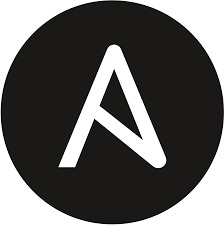
Ansible

Chef
.png)
Jenkins

GitLab CI

AWS

Azure

GCP
.png)
Docker
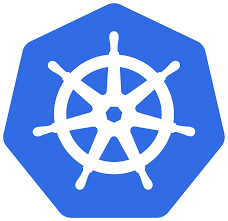
Kubernetes

SSL/TLS

IAM

VPN
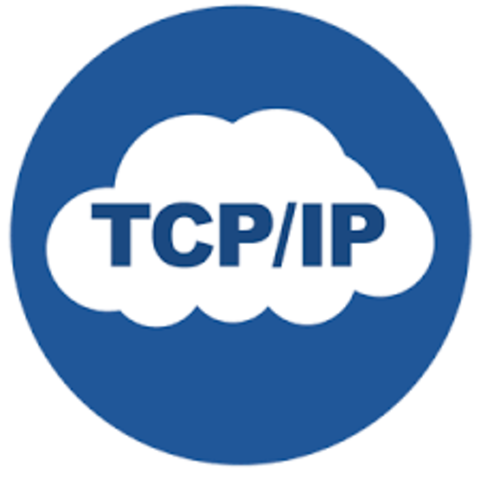
TCP/IP

DNS

Firewalls

Git

GitHub

Bitbucket

JMeter
.png)
ELK Stack

Puppet

OpenTelemetry
.png)
Istio

Apigee

Kong

AWS API Gateway

Consul

Airflow
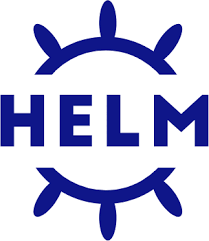
Helm

EC2

S3

RDS

VPC

AppDynamics

Terraform

AWS

GCP

NGINX

Prometheus

Shell

Logic Apps

Terraform

Azure DevOps

AWS

AKS

IAM
.png)
Dynatrace

ELK

DNS

Load Balancing

Spark

Power BI

Databricks

Delta Lake
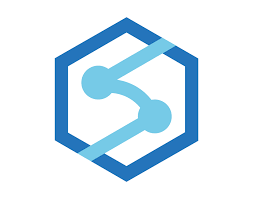
Azure Synapse

ADF

GDPR

SOC2

HIPAA
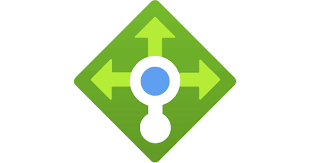
Azure Load Balancer

Azure Functions

AKS
.png)
Datadog

Rally

Terraform

AppDynamics

Azure DevOps

AWS

GCP

EKS

IAM

VPN

GitHub

Power BI

ADF

NGINX

HAProxy
Work History
Manager - IAM Cloud
Tredence AnalyticsModule Lead - IAM Developer Okta
Persistent SystemsConsultant - IAM
Simeio SolutionsSolutions support - IAM Support
Rapidflow softwareIT Representative
IRY SolutionsSecurity engineer
Daxton TechnologiesAchievements
- Individual Bravo Awards: Recognized twice for working as an individual contributor to successfully deploy microservices in Kubernetes environments.
- High Five Award: Awarded for completing an end-to-end monitoring implementation that improved system visibility and incident response times.
- 100% Customer Satisfaction (CSAT): Achieved continuous 100% CSAT scores for three quarters, backed by appreciation emails and LinkedIn recommendations from clients.
- Performance Optimization Initiative: Led efforts to optimize platform performance, increasing system uptime by 15%, and reducing service disruptions.
- Automated Disaster Recovery Implementation: Implemented automated disaster recovery solutions, significantly reducing recovery time objectives (RTO) by 50%, ensuring high service availability.
- Cheers Awards : Continues Twice Cheers awards for creating architectural diagrams and network diagrams.
- Designing customized solutions to unique client challenges demonstrating adaptability and innovation
- Headlining SRE initiatives that led to significant cost savings without compromising service integrity
- Cheers Awards
- Individual Bravo Awards
- High Five Award
- 100% Customer Satisfaction
- Performance Optimization Initiative
- Automated Disaster Recovery Implementation
Testimonial
Ive worked with Imdad when he was part of the SRE Team at Intuit. During this time, I found him to be highly proficient in DevOps and cloud automation technologies such as Chef, Puppet, Terraform, Jenkins, Docker, Kubernetes, etc. He leveraged his skills to automate and establish various security and compliance processes at Intuits IDX in alignment with security standards such as ISO 27001, PCI DSS, etc. that not only helped us become compliant with the aforementioned standards but also helped us reduce risk to customer data. Further, he is a thorough professional, understands business priorities well ensures that he delivers work on time, and is fun to work with. I highly recommend him for any DevOps or SRE lead positions.
I want to thank Imdad on his training, I have gained a deeper understanding of cloud computing and programming concepts, which has helped me to advance my career. I would highly recommend your training to anyone looking to improve their cloud and programming skills. Once again, thank you for your outstanding training and for sharing your knowledge with me.
I wanted to take a moment to express my appreciation for Imdad for his exceptional leadership skills and the positive impact he made on our team. Working with Imdad has been an absolute pleasure, and I have learned so much from his guidance and expertise. His ability to motivate and inspire others is truly remarkable, and his problem-solving capabilities have been invaluable in achieving our team's goals. His effective communication skills have also been instrumental in fostering a collaborative and supportive team culture. I highly recommend Imdad as a true leader to anyone looking for a skilled and dedicated professional. His passion for work and his positive attitude make him an asset to any team, and I feel fortunate to have had the opportunity to work with him. Thank you for being an outstanding colleague and for making our work experience a positive one.
Imdad is an exceptional Senior DevOps Engineer with a deep understanding of DevOps principles and tools. I had the privilege of working alongside them, and their contributions were invaluable. They consistently streamlined deployment processes, optimized system performance, and fostered collaboration within our team. What sets Imdad apart is not only their technical prowess but also their positive attitude and willingness to mentor others. They excel at sharing knowledge, solving complex problems, and bringing innovation to the table. Their dedication and expertise make them an asset to any organization. I wholeheartedly recommend Imdad for any senior DevOps role they are a true professional with a bright future.
Imdad is a highly skilled DevOps module lead with a deep understanding of the latest technologies and best practices. He successfully manages and mentors cross-functional teams drives innovation, and delivers high-quality solutions. Imdad's expertise in cloud computing, automation, and continuous integration/delivery has greatly benefited the organization. His collaborative approach fosters a culture of excellence within the team. Imdad stays up-to-date with industry trends and implements cutting-edge solutions that improve development and deployment processes. He communicates complex technical concepts clearly and concisely. I highly recommend Imdad to any organization seeking a talented and driven DevOps leader who can deliver results and drive innovation.
Major Projects
Observability Architect - GenAI Platform
Education
Bachelors of Engineering - ECE
Anna University - Chennai (2013)
Certifications
- Credential ID : 126471091
Academy Accreditation - Azure Databricks Platform Architect
Databricks (Dec, 2024) - Credential ID : 89752790
Academy Accreditation - Generative AI Fundamentals
Databricks (Dec, 2023) - Credential ID : 89757715
Academy Accreditation - Databricks Lakehouse Fundamentals
Databricks (Dec, 2023) LFS158: Introduction to Kubernetes
The Linux Foundation (Aug, 2024)Linux Foundation Certified System Administrator (LFCS)
The Linux Foundation (Aug, 2024)SQL Certificate
Hackerrank (Jul, 2023)
Credential URL : Click here to view- Credential ID : evt5i66q52v6
Essentials Jenkins
Jenkins (Aug, 2021) Salesforce Devops
Noble Work Foundation (Sep, 2022)Amazon Web Services DevOps Engineer - Professional
Amazon Web Services (Oct, 2020)Linux foundation - gitops
Cisco Certified Network Associate Cloud (CCNA-Cloud)
Cisco (Apr, 2014)- Credential ID : RHEL-imdadk232368
Red Hat Certified System Administrator (RHCSA)
Red Hat (Mar, 2017) Linux foundation - kubernetes
Academy accreditation - azure data architect
Academy accreditation - databricks lakehouse
Certified jenkins engineer
Databricks sql certificate (basic & intermediate)
Academy accreditation - generative ai
Red hat certified system engineer
Ccna cloud
Interests
AI-interview Questions & Answers
Could you help me understand more of your background by giving a brief introduction of yourself? Okay. So, uh, my name is Inder. I've been, uh, working as a engineering lead, DevOps engineer, uh, at Persistent Systems. So, uh, currently, I'm handling a a team of 5 members. My current roles and responsibilities are more like, uh, um, checking the security vulnerabilities, uh, working on the day to day activities. We do have a Kanban board, uh, where we track all our progress. So being a DevOps and reliable engineering, um, uh, I have been more into, uh, uh, on call support too. So we have, uh, 24 by 5, uh, uh, on call support. So but, uh, if, uh, if, uh, I've been assigned as a on call engineer, uh, I was more into taking the shift rotation from my previous on call to check the performance of the, uh, current system and all this stuff. So, uh, if you talk about the cloud, I'm good at AWS and, uh, Azure. Uh, if you want me to explain about CAC tools, uh, good at, uh, Jenkins, infrastructure automation, Terraform, and cloud formation template, uh, configuration management, Ansible, Chef, and Puppet. Uh, orchestration, um, um, of Kubernetes, uh, when it comes to a containerization token. And we also use the queue, um, uh, for Kubernetes orchestration along with the OpenShift, and I imported help charge, uh, using AML. When it comes to, um, uh, automations, uh, within the infrastructure automation terraform, right, we have when it comes to within the automation's life cycles are balancing the automations wherever it is possible, working on Python, uh, script, uh, along with Go. So, uh, I'm also good at shell script, creating Jenkins configuration branch. So, uh, apart from that, uh, uh, good at monitoring, uh, Splunk wave front and app dynamics. So this was I've been doing a position system. So total overall, uh, 10 years of, uh, IT experience, uh, towards, uh, DevOps quarterly, uh, into 8 years of DevOps engineering. Earlier, I worked for a company called Senior Solution, more on a platform engineering, automating the platform, all this stuff. Thank you.
Uh, present okay. Present a solution to automate the failure process for a Python application hosted on AWS EC 2. Okay. Okay. So, uh, present a solution to automate the failure process for Python application hosted on AWS. See, automating the failure process, uh, for Python application hosted on AWS ec2, I think, uh, which involving of for setting up a high availability, uh, configuration. Right? So, uh, we have to make sure we need to ensure that application having, uh, remains accessible, um, in case of an instance failure or downtime. So, uh, when it comes to, uh, leveraging the AWS services, right, uh, the components we have to use is Amazon EC 2 for hosting that Python application, elastic load balance, uh, to the distribute incoming traffic across multiple EC 2 instances. Uh, Amazon, uh, Route 53 for DNS management and the health checks. And, uh, we can use auto scaling group, uh, to maintain application availability, and we need to automatically replace unhealthy instances. Right? Uh, apart from that, uh, we have to, um, use a CloudWatch to monitor application, not trigger any scaling actions. And to execute any recovery process, sir, we need to add the notification script. We need to use, um, uh, AWS Lambda. Okay. So, uh, uh, if you want, uh, the step by step automation setup is, uh, first, we need to set up EC two instance. We need to deploy our Python application on on multiple EC two instances across different different availability zones, USH 2 and USH 2, uh, to ensure, uh, it has the right redundancy. And we need to configure the elastic load balancer. We need to set up an, uh, ELP to distribute the incoming traffic across, uh, our EC two instance evenly. So this helps in managing the load and provides fault tolerance. And we need, uh, as we discussed, we need to implement auto scaling. We need to create an auto scaling group, and, uh, we need to add, uh, uh, Route 53 health checks, uh, and the DNS failures. So, uh, health checks, uh, uh, for route 53 need to configure, uh, to monitor the health of the issued instance. DNS failure to use to hold the, uh, route the, uh, route 53 to automatically route the traffic to unhealthy instances. So this is, uh, how we need to route. Then monitoring with Amazon CloudWatch, we need to make a significant metrics, uh, where whenever we notified of any performance issues of their instance. So, uh, this is how, uh, we need to do. And once everything is, uh, done, uh, we need to, uh, regularly test the failover mechanism, and we need to check whether it is working as expected during any actual outage. Um, this includes both stimulating and instance failover. So I'm measuring the recovery times. So all this comes. So we can do it, uh, by creating ancible playbook for deployment automation, all this stuff. Thanks.
Okay. Convey how you would optimize Docker image sizes for Python application without affecting performance. Okay. Okay. So kindly, how would you optimize Docker image sizes for Python application without a see, uh, but first, we need to choose the right image, uh, where it has a minimal base image. Right? We need to use minimal base images like, uh, Alpine or or Debian Slim instead of using a full OS images. So the you using the using this minimal, uh, base images, uh, I think, uh, um, like, Alpine or Debian Slim instead of full OS. These images has this essential libraries and tools, right, uh, which needed to run the application. So, uh, significantly, we can reduce the image size. So once we are ready with choosing the right base image and uh, and, uh, we need to have our, uh, one of the official Python image. Like, uh, we need to use an appropriate tag, right, with an official Python image. For instance, Python, uh, 3.9, uh, slim or 3.9 alpine or similar like any standard Python image. And, uh, then we need to, uh, combine the run statement by combining these, uh, related commands into the single run statement. Right? We can able to reduce the number of layers in our image, uh, which in, uh, ten, uh, reduces the size, all this. So, uh, and, uh, we can, uh, do this, uh, utilize the multistage bills. So we need to build an application in 1 stage with all necessary build tools and dependencies, then copy the final artifact to a clean state. So this way, we can, uh, develop tools and, uh, we can, uh, we can do this, uh, or don't end up in the final image. And the the third one, uh, is to optimize the application depending on this, like, trim the dependencies, use the wheels, all these. So, uh, when it comes to trim dependencies, we need to review and remove unnecessary or unused dependencies from our requirement dot TXT. And, uh, we use this, uh, pre compiled wheel files, right, when, uh, we are faster to install, and we don't require to come, uh, on, uh, require a completion on a step, uh, at a bill bill time. So, uh, that that's where we use wheels. Then we leverage the docker, uh, uh, docker ignore. So we need to exclude these unnecessary files, and we clean up in this in this land there. Like, while we're installing the packages, uh, within the package managers like APT, uh, we need to ensure that, uh, when we are we are cleaning up the catchy, uh, and temporary files within the run instruction to prevent. Right? Uh, that's where we clean up the same layer, and we use environment variables and, uh, by by adding environmental manage to, uh, for the configuration options, like creating configuration layer within the docker image. So this keeps the, uh, image generic and, uh, smaller. So, uh, by implementing, uh, these strategies, and I think we can, uh, effectively reduce the docker, uh, image, uh, or docker image sizes for Python application. We can optimize it right manner.
Okay. So explain an approach to setting up auto scaling for services running in Kubernetes, considering, uh, fluctuations in traffic. Considering fluctuations in traffic. Uh, setting up auto scaling. Okay. Okay. See, I think, uh, setting up an auto scaling for services running in Kubernetes, right, which we need to handle the functionalities in traffic, uh, differently. Like, first, we need to, uh, uh, we need to ensure that our Kubernetes cluster is equipped with, uh, metrics server and, uh, resource request and image. So, uh, metrics server is something we need to, uh, install the metrics server in our cluster, uh, if it is not, uh, already present. Right? What what it will do is it will collect the resource metrics from, uh, cube, uh, kubelets and exposes them via a Kubernetes API, right, for use, uh, by the horizontal port auto scaler. Uh, then we need to, uh, request, uh, we need to do the resource request and limits. We need to define these, uh, resource request and limits in our, uh, port specifications, uh, where our HP uses these metrics to make scaling decisions. Apart from that, we need to, uh, install and configure HP Highpod Auto Scaler. See, uh, what will happen is HP automatically scales the number of ports, uh, in a deployment. It will, uh, as a replica set, uh, it's a is it a or a stateful set on based on what kind of CPU utilization or other selected metrics. Uh, for, uh, I think that was a configuration where it will automatically scale the number of parts in my app deployment, right, like, between 110. And, uh, we are aiming to maintain average CPU utilization across all ports, uh, like a 50%. Then, uh, maybe we can add advanced scaling with some custom metrics like, uh, like, uh, using some Prometheus adapter. Right? We can install Prometheus and Prometheus adapter to expose these custom metrics, uh, to the Kubernetes API. And we can, uh, yeah, we can also define, um, one HP, which, uh, which we'll use as a custom metric, like h p HTTP request per second, something like that. So, uh, and, um, we we can use, um, uh, Grafana to just to monitor, um, the tube c t l, monitor the HPSD of error and the scaling of the port replicas, all this stuff. And based on our whatever we are observing on the application, based on whatever the performance or metrics during the peak or off peak, uh, traffic, We can adjust the threshold, and we can, uh, limit this HPA configurations. So as a being it's a HPA, we have to ensure that it has a high availability and the performance by keep on doing the, uh, test scaling and updating and the optimizing. So I think these are the steps, uh, I think we by following these, uh, these steps, um, it will make our Kubernetes, uh, as a robust auto scaling system for the services in Kubernetes. Yeah.
Okay. Detail a method to ensure the security and compliance of Docker containers in a CICD workflow. Okay. Detail a method to ensure this. Detail detail a method to ensure the security and compliance of Docker containers in a CSCD workflow. Method see, uh, when when we talk about, um, method okay. Okay. See, uh, we we have to ensuring the security and, uh, compliance of docker containers within the CICD workflow. That's what I understood, uh, from this. I think, uh, we we, uh, maybe, um, see, there are different aspects of security and compliance throughout the container life cycle. So so when when we talk about specific to the, uh, docker container complaints, uh, we need to use the trusted base images. See, uh, while, uh, where all say, trusted base images from our, uh, reputable registries like Docker Hub or and, uh, so so that, uh, we can secure the base images. Right? So, um, by updating regularly updating these images, also, we can uh, regularly upgrading these base images. Uh, also, uh, we can get the latest security patches. So we can automate this process within our CI tool, like Jenkins, to check for check for and pull updated images. So, uh, we have to, uh, sometimes we need to integrate vulnerability, uh, scanning. So, like, uh, currently, we are using a client, uh, where, uh, um, that is our IT team who performs this, uh, where they, uh, what they do is they the client, uh, into our CFI plan to scan the images for, uh, known vulnerabilities during the build process, fail, uh, fail the build if any critical, uh, vulnerabilities for some kind of checks they are doing. I was not pretty sure on it. But, um, uh, doing the continuous scanning, setting up a scheduled scans of an images stored in our registry to catch the vulnerabilities and, uh, that up that appear after the initial scan. Right? So, uh, this continuous scanning and enforcing, uh, enforcing, uh, or using uses of any, uh, minimal containers like, uh, uh, minimalizing utilizing only minimal base images like all pipeline x to reduce the attack surface. Right? These images contain only fewer components. So we can minimize the uh, potential for our security vulnerabilities, and, uh, we can perform we can implement some multistage, uh, builds in within the Docker files to keep our, uh, production images free. And, uh, we can manage, uh, secrets, right, by, uh, hard hard coding the secrets, by injecting secrets at a run time, implementing role based access control. All this stuff, I think there are multiple steps, like, uh, incident response plans, all this stuff. I think I think, um, uh, in summary, uh, by, uh, by integrating these practices into our CICD workflow, I think we can significantly, uh, enhance the security and compliance of Docker containers. So I think, uh, that's what I can call to say.
So discuss a process for securely managing secrets in AWS when deploying a Python application using Docker containers. Okay. Discuss a process for securely okay. Discuss a process for securely managing secrets in AWS when deploying a Python application using Docker containers. Okay. What kind of process I can say? Okay. See, uh, securely managing the secrets in AWS, uh, when we, uh, are deploying, uh, a Python application using Docker containers. Right? Like, uh, first, we need to have our, uh, secret manager is ready. Like, our let's take AWS secret manager, uh, where, uh, it is a secure and scalable service, right, which handles the storage management storage management and retrieval of different secrets. Uh, when it comes to, uh, store secrets, uh, we start by storing all our secrets. Right? Secrets like API keys, database credentials. Uh, within that, um, we store in the secret manager. So each secret whatever secret we store, uh, in our store secrets. Right? Uh, each secret is encrypted using encryption keys, and this is managed, uh, through AWS, um, uh, KMS service. So that's how we, um, uh, we, um, uh, that's why, uh, I I take an example of AWS secret managers. So sometimes we need to configure these secrets manager to automatically rotate. Right? The secrets on the predefined tool. So this will, uh, automatically, we can do by creating some, uh, Terraform or Ansible playbooks. So, uh, while, uh, in terms of the, uh, question specific, we need to if we want to integrate with our Python application, so we need to modify our Python application to retrieve secrets dynamically. We can't, uh, manually pass it. Right? We need to, uh, retrieve secrets dynamically from secrets manager, uh, rather than hard coding them. So, um, like, uh, loading them from enrollment variables, I think that will definitely, uh, will help. So to do this, first, we need to, uh, use this, uh, AWS SDK for Python. Uh, let's take 4 23 as a library where it will interact with the secret manager, which includes, uh, our application dependencies, and it will retrieve the secrets at a run time. So we can modify the application to fetch, uh, secrets at runtime using. Right? Uh, that maybe if, uh, if it is a real intro, I would have shared my screen and showed you how we can dynamically fast. And we can configure our, uh, I'm roles and policies, uh, like, uh, assigning the I'm roles to our IC two instances or, uh, ECS task, which will run on our doc docker containers. We can give least privilege, I'm policy, uh, all this stuff. So we can secure our docker containers, uh, using, uh, official images, scanning the images for any vulnerability within the CICD process, and managing the secrets in Docker Compose, or, uh, we can do it in Kubernetes. Uh, let me Docker Compose, uh, we can, uh, what it does, it directly support our, uh, AWS I'm roads, but we can pass through. Right? All these, uh, we I think, uh, these are the steps. Maybe we can, uh, we can follow this different approach, uh, where it will ensure that our secrets in our Python application deployment on AWS can be managed securely and, um, uh, comply with the practices. But, uh, sense to it's a sense to data handling. Right?
So examine the batch script snippet. Uh, identify the bug that prevents the script from currently checking. Okay. If, uh, minus f tmp minus f o o dot t x t, then /enecho /fileexist/andechofile does not exist//underscorefilesnf5. Okay. Okay. See, I think, um, I think it is from, uh, place to be, I think, mix of syntax from different script line. Okay. Okay. Echo offer. Okay. See, I think See, I think it's trying to combine, um, uh, look like, uh, different elements from script commands. Okay. If, uh, bracket minus f/temp/f04.txt, close bracket, colon, then /necho/nfileexist, double/, uh, n l/n, echo/file. File does not exist, //nfi. I'm not sure what is the bug. Slash bin slash f. I think that tmp is a reverse slash, uh, that f f o dot t x t because the, uh, if minus f t m p. Okay. That is correct. F f o. Okay. Um, why there is then there is no then, uh, then, uh, it will come as a echo. Then there is that. But slash n, I think, uh, not sure. I think, uh, I I so I think it's a shebang. I think they're using a shebang line, uh, which tells the system this should be run using bash. And it is minus f is, uh, it will check the file, uh, the command. Right? Uh, f f o dot t x t, uh, exist in the temp directory, then minus f operator checks the presence of regular file. Okay. Echo minus e. See, I think, uh, it will I think it will, uh, clear I think it will show the clear output with the proper line breaks. Right? And it will checks for the existing of the file using absolute path notation. Uh, if we that's, I think, um, not yeah. I think that's it.
Okay. Okay. Okay. What is the problem with the Docker file snippet in terms of best practices? Okay. From Python 3.8 slim/endrunaptgateupdate, and then apt get install minus y get and copy apt app, uh, end worker directory apt and run pick install minus r requirements dot pxt. Okay. Command's included for a Dockerfile to set up a Python moment using okay. Okay. So I think from Python, uh, 3.8, uh, SLM, we can, uh, set up a working directory within the container with, uh, workdir/ app. Right? And we can install any needed packages specified in the requirement of DHT. Like, uh, we can include the git, uh, like, um, run the APT, get update, and then APT get install minus 5 git /. And we can copy the current directory, uh, uh, contents into the, uh, containers, like, uh, at, uh, slash app. Once it is get copied, then we install, uh, any needed package specified in the requirements dot TXT. Like, we can run the PIP install, uh, no cache directory minus our requirements dot TXT. And, uh, we have to make sure that our report, uh, uh, edge series available to the world. So expose 8 0, e n v, uh, name is, uh, something we can give. Um, so by giving the c f, uh, c s command, Python, uh, app.py, I think, uh, that's pretty sure, uh, it will run. So I think the I think this using this, I think the Docker file assumes that our application, uh, the Python application that requires a git and listens to the port 80, and we can adjust the exposure command. Uh, so other directories as necessary based on the application behavior.
Demonstrate how you ensure, uh, idempotany in Python script that is part of a larger automation task in AWS infrastructure. I didn't put any I didn't put in c. Okay. See, I think, uh, ensuring that item building, uh, not item put in c in a Python script. Right? So I think maybe you can, uh, that's, uh, 3 questions about we discussed. Right? I've gone using of AWS SDK for Python. So it will, uh, what will happen is it will interact with AWS service, like, we'll use Boto 3, uh, like, the, uh, for the AWS, uh, SDK for Python. So this, uh, provides us, uh, like, a programmatically managed AWS services. Uh, we can set up boto 3 and AWS credentials like a by using a simple command pick install boto 3 by configuring our AWS credentials. Right? And, uh, once it is done, we need to check before, uh, creating the resources to, uh, we need to check the resources already exist, uh, before attempting to create it. Like, uh, for instance, like, uh, if we are automating the creation of an easy two instance based on specific criteria, then we can define it, uh, by, uh, based on create a new instance with ID, like, instance ID for, uh, else print as a instance already exist within the ID, something like that. So, um, handling the item potency, uh, in state changing operations for operations, uh, which modify the state of the resource, like like, as a set like, a stage, uh, starting or stopping an instance. So ensuring that operations is needed before executing it. So for that also, we can use. And, uh, user using AWS service, right, that, uh, that particularly supports the, uh, item printing service. Like, there are few services, uh, which will provide item potency tokens, um, uh, in their APS to manage the creation of resources, like like, when creating ECG instance, we you can provide a client token to guarantee that the launching of, uh, uh, launching that particular intent, uh, instance is, uh, item potent. So that's how we can do. So I think to, uh, to ensure our Python scripts are, um, item potent, uh, in AWS, uh, automation. So so we need to always check, uh, the existing state before performing any actions. Actions like, um, using a 4 to 3 effectively and leveraging features like item potency, tokens when available. I think this this is the approach, right, where we can minimize the errors. We can avoid the resource duplication, and, uh, we we can ensure that our application, um, um, uh, scripts are reliable and predictable. So I think that's that's how, uh, we, uh, make sure that, uh, item potent in Python script. That is a part of, uh, any any larger automation task.
Okay. Develop a process for centralized logging of distributed microservices in Kubernetes with a focus on traceability. Is there any option that, uh, I can right. Okay. So see see, setting up, uh, the, uh, robust and centralized logging system, uh, for, uh, for, uh, for, uh, any distributed microservices running on Kubernetes. Right? I think that is very crucial, uh, for monitoring, for debugging, for tracing interactions between the services. So I think this is a a generic and most, uh, everywhere service everywhere solution, I think, uh, should be implemented to check the unified view of logs and all the microservices. Right? So, uh, first, I think, uh, as a as a as a first step as a first step, uh, we need to choose a logging stack. Say, if, uh, for a Kubernetes involvement, I think, uh, ELK stack. I think Elasticsearch logs task, or EFK stack, uh, like, elastic search, Flynt, Kibana. I think these are the commonly used logging, uh, uh, proposals. Right? So for, um, so for my case, uh, for this case, we can go with the fluent ID. It is often you uh, preferred in Kubernetes because it's a lighter resource and, um, um, um, and a better integration with Kubernetes. That's where we, uh, we go with the fluent ID. So how we can, uh, deploy this fluent ID as a daemon set? So, see, fluent ID should be displayed as a daemon set in Kubernetes because, you know, it it will ensure that, uh, uh, fluent ID instances running on each Kubernetes node. So, uh, it will collect the log from all the ports to that particular node. So the how, um, how we do it is, like, first, we need to create a fluently configuration. Uh, it will collect the logs from Kubernetes Kubernetes container, and we can filter them, uh, and then forward to, uh, forward them to our elastic search. So this configuration should also enrich logs within the Kubernetes metadata, like port name, namespaces, labels, uh, to aid in acquiring and visualizing. Um, or else we can use offline d Kubernetes plugins. Right? These plugins will helps to enriching the logs within the Kubernetes specific metadata. So that metadata, uh, there is an option I could have written. So after that, we can, um, uh, we can set up Elasticsearch. Uh, so Elasticsearch act as a central store for logs. Um, by deploying the Elastic search, we can, um, within the Kubernetes or externally, uh, it's we can use as a persistent solution to handle all the log data. And after that, we can deploy Kibana for visualization. So we need to integrate the Kibana with the Elasticsearch, like configuring Kibana to connect, uh, uh, our Elastic, uh, search instance. And we need to set up a dashboard, like, a dashboard, like, visualizing the logs from different microservices and trace the transaction or request flows across the, uh, microservices. Uh, then we need to implement, uh, distributed, uh, tracing, uh, like instrument, uh, and we need to aggregate and analyze the logs. So log rotation and retention, alerting, all these comes. It's a it's another 4 minute answerable question. I think, um, I could have covered most of the things.
Okay. Craft a solution to achieve CICD pipeline, FNG, and C using AWS CodeBuild and CodeDeploy for a Kubernetes based application. CodeBuild and CodeDeploy. See, I have not worked on CodeBuild and CodeDeploy, but I have a knowledge how we can set up. Uh, first, we need to, uh, set up a source control, uh, like, uh, source control, like, GitHub, uh, we are using. Then we can define a bill, uh, bill spec for AWS code build. Right? Code will, uh, like, it will compile your code. It will run the test, and it will build our docker container. So create a a build spec, uh, YAML file, I guess, and then we need to create a docker build. Um, by using this, uh, we can start up the process, and we can set up, uh, this, uh, AWS code deploy. Uh, it will which will manage the deployment of the Docker container to Kubernetes cluster. Uh, like, um, uh, if you need to define an application in, uh, code deployment, the deployment group specifying the deployment configuration. Right? That's all, uh, we need to create, and we need to make sure that our, uh, cube CTL or Helm charts to manage these deployment services. Uh, other necessary Kubernetes resources, we need to configure using Kubernetes configuration and the deployment configuration. And, uh, we need to integrate this whatever we have performed this configuration file is ready, then we need to integrate this, uh, to our AWS AWS code pipeline. Uh, while we're creating a code pipeline, we need to, um, configure a pipeline in AWS code pipeline. Right? That pulls the source from the repository and trigger the, uh, code build to, uh, build and push the docker image. And then it will trigger the code to play to deploy the updated image to Kubernetes. That's how the pipeline works. Uh, sometimes there are cases where we need to utilize the artifacts to pass the information between the stages. Right? Such as, like, uh, image, uh, definition, uh, JSON file, which is generated by this, uh, code wheel. And, uh, we can also just like Jenkins, we can also, uh, do the automating the rollbacks and alertings, uh, by, uh, setting up the rollback request. Right? And, uh, we can configure specific IAM role for, uh, code will so that only, uh, permissions are, uh, there to interact with the ECRECSR, the Kubernetes, and other any AWS services. I think, uh, these are the steps where, um, uh, we can establish some kind of a good CACD pipeline where, uh, that leverage both the, uh, AWS code build and code deploy, uh, for the Kubernetes based application. Yep.